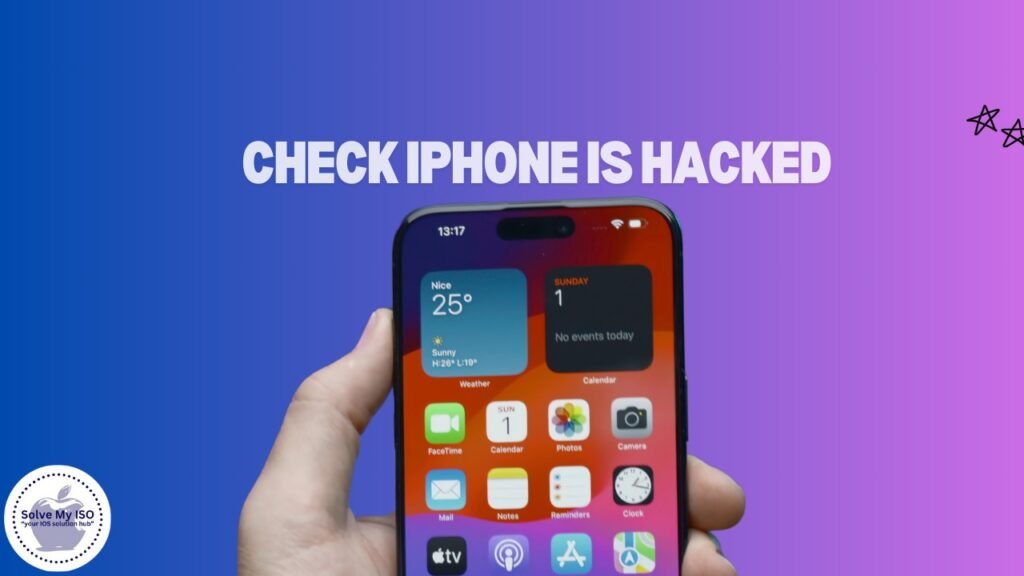In today’s digital age, the importance of smartphone security cannot be overstated. Our smartphones are not just devices for communication; they hold our personal information, financial details, and even our professional data. As iPhone users, we often believe that our devices are impervious to security threats, but this is a common misconception. Hacking incidents have become more frequent, and iPhone users are not exempt. This comprehensive guide aims to help you check if your iPhone is hacked. By understanding the signs and taking appropriate actions, you can ensure your device remains secure and your data protected.
Understanding iPhone Security
iPhone’s Built-in Security Features
Apple’s iPhones are renowned for their robust security features. From encryption and secure boot processes to regular software updates, Apple ensures that your device is as safe as possible. These features include:
- Face ID and Touch ID: Biometric authentication methods that add an extra layer of security.
- Encryption: All data on the iPhone is encrypted, making it difficult for unauthorized users to access your information.
- Secure Enclave: A dedicated chip that securely stores sensitive information like authentication data.
Importance of Keeping the Operating System Updated
One of the most effective ways to maintain your iPhone’s security is to keep its operating system updated. Each new iOS update includes patches for security vulnerabilities that could potentially be exploited by hackers. Neglecting these updates leaves your device susceptible to attacks.
Common Misconceptions About iPhone Security
Many users operate under the false belief that iPhones cannot be hacked. While it’s true that iPhones have strong security measures, no device is entirely immune to hacking. Understanding this can help you take proactive steps to protect your device.
Signs Your iPhone Might Be Hacked
1. Unusual Battery Drain
One of the first signs of potential hacking is sudden, unexplained battery drain. If your iPhone’s battery is depleting faster than usual, it could indicate that malicious software is running in the background.
2. Increased Data Usage
Unexpected spikes in data consumption can also be a red flag. Monitoring your data usage through your iPhone’s settings can help you identify any unusual patterns that may suggest your device has been compromised.
3. Strange Pop-ups and Ads
If you encounter pop-ups or ads even when not browsing, your iPhone may have malicious software installed. These intrusive ads are often a sign of adware or other malware.
4. Slow Performance
A hacked iPhone might exhibit unexplained lag or slowdowns. This can occur when malicious background processes consume system resources, affecting your phone’s overall performance.
5. Unfamiliar Apps
The presence of apps you did not install is a glaring sign that your iPhone might be hacked. These unfamiliar apps could be installed by malicious actors to steal data or spy on your activities.
Methods to Check for Hacking
1. Reviewing App Permissions
Regularly checking and managing app permissions is crucial. Navigate to your iPhone’s settings to review which apps have access to sensitive data and features. Apps with excessive permissions should be scrutinized carefully.
2. Monitoring Data and Battery Usage
iPhones offer built-in tools to track data and battery usage. By regularly monitoring these metrics, you can identify any suspicious activity that may indicate your device has been compromised.
3. Checking for Jailbreaks
Jailbreaking an iPhone removes the built-in security features, making it more vulnerable to hacking. If you suspect your device has been jailbroken without your consent, there are methods to check and revert it to its original state.
4. Using Security Apps
Several security apps are available for the iPhone, designed to identify and mitigate threats. Apps like Lookout and Avira offer comprehensive security checks and can alert you to potential vulnerabilities.
Steps to Secure Your iPhone
1. Updating iOS and Apps
Ensure your iPhone’s operating system and all installed apps are always up to date. Automatic updates can be enabled to simplify this process, ensuring you receive the latest security patches and improvements.
2. Changing Passwords and Using Two-Factor Authentication
Regularly updating your passwords and enabling two-factor authentication adds layers of security to your accounts. This makes it more difficult for hackers to gain unauthorized access.
3. Restoring iPhone to Factory Settings
If you believe your iPhone has been hacked, restoring it to factory settings can remove any malicious software. However, be sure to back up your data before performing a reset.
4. Contacting Apple Support
When in doubt, reaching out to Apple Support can provide professional assistance. They can help you diagnose issues and offer solutions to secure your device.
Preventive Measures
1. Avoiding Suspicious Links and Downloads
Recognizing and avoiding phishing attempts is crucial. Always verify the legitimacy of links and downloads before interacting with them to prevent installing malicious software.
2. Regularly Reviewing App Permissions
Continually managing and reviewing app permissions can prevent unauthorized access to your data. Make it a habit to check these settings periodically.
3. Using Security Features and Apps
Leverage the built-in security features of your iPhone along with recommended third-party security apps. This dual approach can provide comprehensive protection against various threats.
Conclusion
Maintaining the security of your iPhone is an ongoing process. By staying vigilant and proactive, you can protect your device and personal information from potential threats. Remember, your security and privacy are paramount.
Frequently Asked Questions
By following this comprehensive guide, you can ensure your iPhone remains secure, safeguarding your personal and professional data in today’s increasingly digital world.
